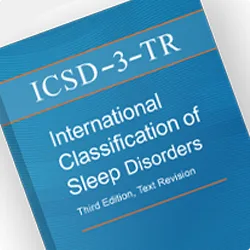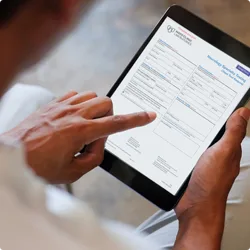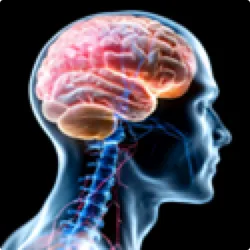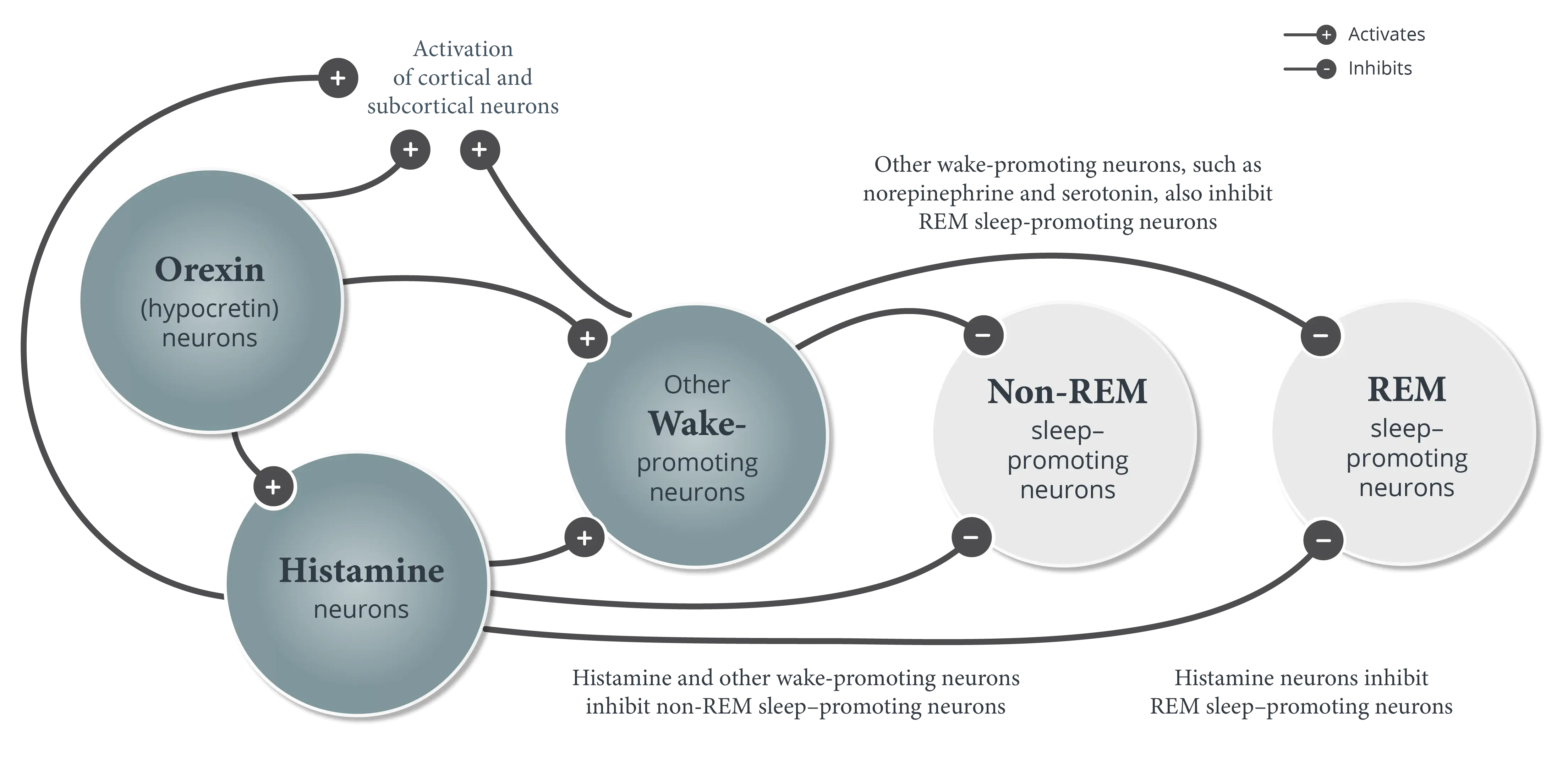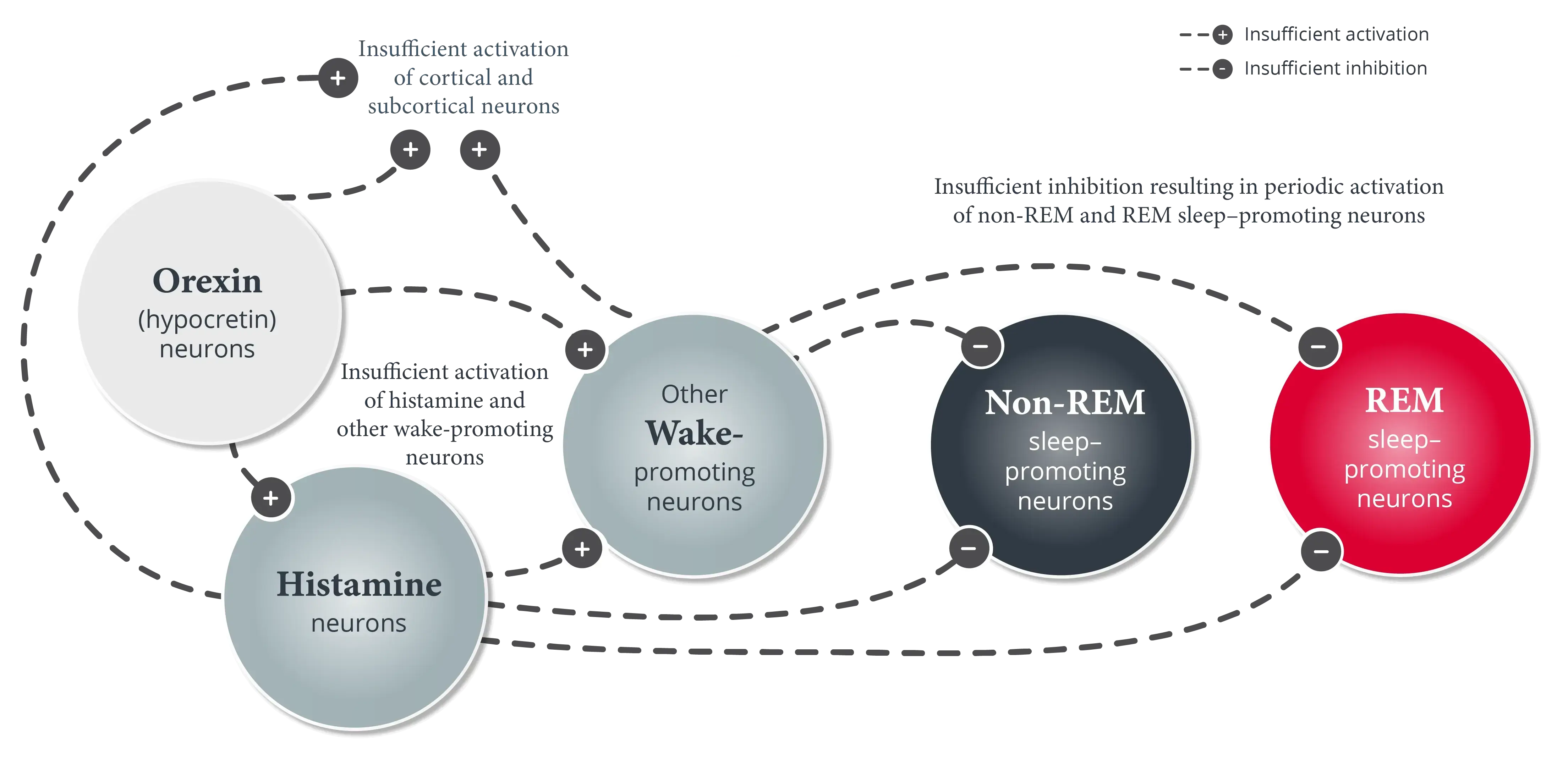

More to Know: Cataplexy in Narcolepsy
This content was developed using the International Classification of Sleep Disorders, third edition, text revision (ICSD-3-TR) and other materials.
More to Know: Cataplexy in Narcolepsy
This content was developed using the International Classification of Sleep Disorders, third edition, text revision (ICSD-3-TR) and other materials.
Overview
Cataplexy is characteristic of narcolepsy type 1 and can manifest in many different ways from patient to patient.1
Cataplexy is defined in the International Classification of Sleep Disorders, third edition, text revision (ICSD-3-TR) as more than one episode of generally brief (<2 minutes), sudden loss of muscle tone, usually bilaterally symmetrical, with retained consciousness. Episodes follow strong emotions, usually positive and very frequently associated with laughter, based on patient reports. Patients rarely experience cataplexy while in a clinical setting, so a cataplexy diagnosis is usually established based on clinical interview.1
Cataplexy is not always obvious, so it can be difficult to recognize in clinical settings, especially when patients do not report it.1,2 Additionally, in patients with narcolepsy, cataplexy may not develop until years after the onset of EDS, so it is important to evaluate patients on more than one occasion.1,3,4
Cataplexy can range from obvious (eg, complete collapse) to less obvious manifestations.1,3,5
Cataplexy attacks may occur multiple times per day to less than once per month.1
The most obvious manifestation of cataplexy is complete cataplexy—the patient may completely collapse to the ground and briefly remain there.1,3 These complete cataplexy attacks often start off small and progress rapidly to the point where patients are unable to stand. However, it is more common for cataplexy to be partial and less obvious—others may not even notice a cataplexy attack unless they are used to seeing one.1
Cataplexy is generally short-lived, with partial attacks potentially lasting only a few seconds. However, consecutive attacks from a continued emotional trigger could merge to appear to be one long episode. In addition, sudden withdrawal of medications with anticataplectic effects, such as antidepressants, can result in long-lasting attacks that happen nearly continuously, known as "status cataplecticus."1
Cataplexy often occurs in the head and neck, manifesting as head drops, but may also occur in other areas (eg, knee buckling, arm/hand weakness).1,3 Hypotonia, especially in the face, is a reliable marker of cataplexy.6 Hypotonia can include abrupt interruption of the smile or facial expression, mouth opening, sagging of the jaw or eye muscles, being clumsy, or dropping things.3,6,7
Cataplexy may also occur as positive motor phenomena, including tingling, trembling, or twitching of muscles or the face.1,8-10
Cataplexy can be triggered by a wide range of emotions or situations1,10:
| Emotions | Situations |
|
|
| Emotions |
|
| Situations |
|
Patients may not realize that they have cataplexy or recognize its impact. They often believe that these experiences are normal, or they may avoid situations that trigger attacks.9
The severity of cataplexy is multifaceted and should not be based solely on the clinical features of the attacks themselves.9 When assessing patients, it is also important to consider psychosocial consequences and limitations on daily life that may occur as a result of cataplexy.12
Get more information on evaluating patients for ongoing symptoms, including excessive daytime sleepiness (EDS) and other symptoms of narcolepsy.
References
- American Academy of Sleep Medicine. International Classification of Sleep Disorders. 3rd ed, text revision. American Academy of Sleep Medicine; 2023.
- Overeem S, Reading P, Bassetti C. Narcolepsy. Sleep Med Clin. 2012;7(2):263-281.
- Thorpy M, Morse AM. Reducing the clinical and socioeconomic burden of narcolepsy by earlier diagnosis and effective treatment. Sleep Med Clin. 2017;12(1):61-71.
- Sturzenegger C, Bassetti CL. The clinical spectrum of narcolepsy with cataplexy: a reappraisal. J Sleep Res. 2004;13(4):395-406.
- Dauvilliers Y, Siegel JM, Lopez R, Torontali ZA, Peever JH. Cataplexy—clinical aspects, pathophysiology and management strategy. Nat Rev Neurol. 2014;10(7):386-395.
- Pizza F, Antelmi E, Vandi S, et al. The distinguishing motor features of cataplexy: a study from video-recorded attacks. Sleep. 2018;41(5). doi:10.1093/sleep/zsy026
- Pelayo R, Lopes MC. Narcolepsy. In: Lee-Chiong TL, ed. Sleep: A Comprehensive Handbook. John Wiley & Sons, Inc; 2006:145-149.
- Lee EK, Douglass AB. Baclofen for narcolepsy with cataplexy: two cases. Nat Sci Sleep. 2015;7:81-83.
- Overeem S. The clinical features of cataplexy. In: Baumann CR, Bassetti CL, Scammell TE, eds. Narcolepsy: Pathophysiology, Diagnosis, and Treatment. Springer; 2011:283-290.
- Overeem S, van Nues SJ, van der Zande WL, Donjacour CE, van Mierlo P, Lammers GJ. The clinical features of cataplexy: a questionnaire study in narcolepsy patients with and without hypocretin-1 deficiency. Sleep Med. 2011;12(1):12-18.
- Anic-Labat S, Guilleminault C, Kraemer HC, Meehan J, Arrigoni J, Mignot E. Validation of a cataplexy questionnaire in 983 sleep-disorders patients. Sleep. 1999;22(1):77-87.
- Maski K, Steinhart E, Williams D, et al. Listening to the patient voice in narcolepsy: diagnostic delay, disease burden, and treatment efficacy. J Clin Sleep Med. 2017;13(3):419-425.

